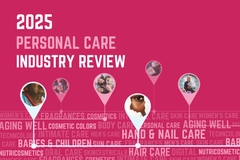ECHA adds cosmetic chemical to substances of concern list

The EU Chemicals Agency (ECHA) has added five hazardous chemicals to a list of substances of concern, including octamethyltrisiloxane, a chemical found in cosmetics formulations and cleaning products. Suppliers in the EU who use this chemical in concentrations above 0.1% will need to inform consumers about its safety risks.
Octamethyltrisiloxane, also called trisiloxane, is a silicone compound that appears as a clear, colorless liquid. It is used as a conditioning agent, emollient and solvent in personal care products. Trisiloxane surfactants are desirable in cosmetics as they help spread ingredients swiftly and also work as a defoamer.
The ECHA has added octamethyltrisiloxane to the Candidate List of substances of very high concern and labeled it “very persistent and very bioaccumulative,” which means the chemical persists in the environment for a long time without breaking down and can accumulate in the body.
Under the EU’s REACH regulation, adopted to protect human health and the environment, suppliers who produce products with a substance on the Candidate List in a concentration above 0.1% must notify consumers about the potential safety risk of the product.
Importers and producers must notify the ECHA within six months if their products contain a substance added to the Candidate List.
Consumer safety
The four other substances added to the list are perfluamine, O,O,O-triphenyl phosphorothioate, tetra-PSCA and the reaction mass of triphenylthiophosphate and tertiary butylated phenyl derivatives. These substances are used in industrial and manufacturing settings.
The Candidate List now contains 247 entries. The ECHA says, “Some of these entries cover groups of chemicals, so the overall number of impacted chemicals is higher.”
A substance may be moved from the Candidate List to the Authorization List. If this happens, companies will need to receive authorization from the EU Commission to use the chemical.
The Environmental Working Group (EWG), a consumer and environmental safety advocacy group based in the US, has given octamethyltrisiloxane (trisiloxane) a “fair” score, depending on the usage. The EWG also lists persistence and bioaccumulation among the chemical’s concerns but rates it low among lists of common concerns for allergies, immunotoxicity, reproductive toxicity and cancer-causing.
The EWG’s list of products containing trisiloxane includes serums, foundations, sun screens and hair products. The group does not provide information regarding the concentration of trisiloxane in the products.
Global beauty safety standards
Federal agencies around the globe are making news regulating substances found in personal care and cosmetics products with the aim of protecting consumers.
Brazil’s Health Regulatory Agency (Anvisa) has produced a resolution to update a list of banned hygiene and personal care substances. If adopted, the resolution would add 28 substances to the list and bring the country’s regulations closer to Europe’s regulations. Anvisa has opened a 60-day comment period regarding the proposed banned substances.
This month, the EU Scientific Committee on Consumer Safety (SCCS) issued its opinion on salicylic acid concentrations in personal care products for children. The SCCS has deemed products with concentrations at or above 0.5% salicylic acid for use as a preservative as unsafe for children ages three to ten.
Simultaneously, the SCCS closed its comment period on its opinion on Benzophenone-1, a synthetic compound used as a UV filter and stabilizer in cosmetics products. The SCCS’s preliminary opinion states that the committee cannot conclude on the chemical’s safety.












